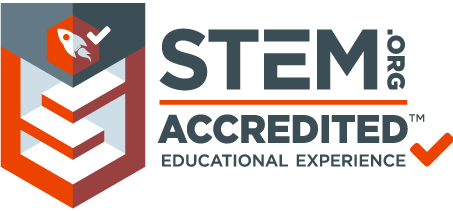My Life As A Program Implementation Associate (PIA)
I joined STEM learning as a Program Implementation Associate. Being a Program Implementation Associate the main responsibilities include proper implementation of the whole program of Mini Science Centres (MSC). In this program, I have to impart training of exhibits to science teachers in schools. Also, it includes proper coordination with those teachers to monitor how the MSC is being utilized and how it is helping us to reach our goal of establishing STEM education in India. At the beginning of my job I was reserved and didn’t want to connect with new people. But through my job I received the opportunity to meet new people and gain new experiences, and this gave me confidence. On several occasions I travelled to the remotest part of multiple states.
Since the sole purpose of all travels was to interact with government school teachers, so I had to learn about our government’s basic education system in the remotest part of the country. Sometime it’s adventurous and exciting while at other times it can get a little stressful while working on the field. As a PIA, I got the perk of travelling to different parts of the country, which has always been my dream. By travelling on duty, I also explored cultures and the socio-economic scenarios of some of the remotest part of our country. My job also gave me the opportunity to interact with the children in these schools. This was the best part of my job as a PIA, as I always cherished the moments spent with children.AQUIB AMIR PIA (North)
Importance Of STEM Education
STEM education refers to the integrated teaching and learning of the subjects namely Science, Technology, Engineering, and Mathematics. STEM education is usually presented through hands-on and relevant real-world learning experiences. STEM is important because our world depends on it. The economy, our general well-being – it’s all backed by science, technology, engineering, and math. You might be wondering then, if STEM is so important, so necessary, then why do we have to keep talking about it? And therein lays the rub. The collective “we” haven’t yet “gotten it” but they have for years. So here we are. A lack of STEM education is in question, but let me explain. We need to first educate and for this there are two different forms of “STEM education” we need to focus on.
“STEM education” with regards to students in school, and the teaching of STEM in the classroom, but also, a STEM education in terms of you, me, parents, teachers; all of us learning more, and getting acquainted to the importance of STEM. Why have I just put your brain in a pretzel? It’s not intentional by any means. The point I’m trying to make is that if we aren’t educated on the importance of STEM, we won’t push our kids to become educated in STEM. Now if we consider STEM jobs, about 1.2 million jobs were left vacant in 2013 which almost got doubled by to 2.4 million in 2017. This is because the prospects under which STEM jobs fall keep expanding. For those eager to learn something new, we live in a great age. Information on any subject imaginable is literally at your fingertips. Unfortunately, the place where many spend their time for learning-school-isn’t quite yet where it needs to be in terms of equipping students with STEM skills.
In fact, only one-quarter of all K-12 schools in the U.S. offer computer science and coding classes. The tough thing is, each school faces its own unique challenges, with some unable to take on the increased costs of incorporating STEM into the classroom. Even if they are, many will have trouble keeping resources up to date with such an ever-changing landscape. Other institutions might have trouble training teaching staffs that are qualified or confident enough to lead STEM curriculum.
And speaking of curriculum, there are many standards teachers need to be aiming to meet with traditional, core subjects—leaving little to no time for new STEM lesson plans. Even in a perfect world (one where STEM was taught in every classroom) would there be enough project-based learning, or would it still be largely lectures? Could the learning be personalized to student needs and learning levels? To really make an impact, learning should be associated with already-established student interests.
Regardless of the situation in the classroom, nothing should really be learned in a vacuum. In sports, you play for your high school team, but you might also play for a club team; you might still go to summer camps, attend specialized academies, and even have a personal coach who you work with for a period of time. STEM shouldn’t really be any different. Most communities are now fortunate to have local programs at nearby libraries or museums that feature STEM activities, and there are tons of regional and national STEM competitions in which student can take part.Aquib Amir PIA (DELHI)
Importance Of Model Based Learning
In the present scenario the science pedagogy needs to be aided with scientific exhibits. Scientific exhibits or models are physical models based on multiple science concepts. These models help children visualize the concept easily and quickly. Visualization will help the children understand the concept in a better and quick way. It has been observed that this model based teaching methodology reduces the teaching time of teachers up to 60%. Existing science pedagogy generally includes board and chalk method which requires the children to imagine the concepts. Some children are able to imagine while others lack this skill. This compels such children to depend on rote learning of scientific concepts.
But this rote learning makes science boring as a subject, due to which children develop a lack of interest in science as a subject and finally they either continue studying science through the same rote learning method or end up as a science dropout while pursuing higher studies. Also, those who continued rote learning while studying science and took up science or engineering at higher levels are the reason behind an increase in the poor quality of human resources in science and engineering fields. Observing the whole scenario, I feel that the need of hour is to focus more on practical and model based learning methodologies.

About Author: Aquib Amir has a total work experience of 7 months in STEM Learning. He is a STEM Educator.

